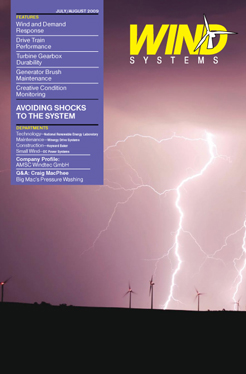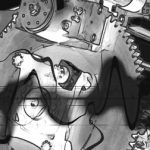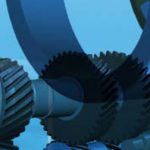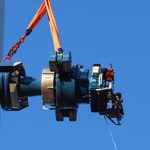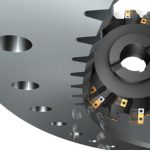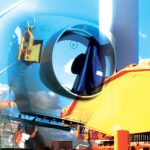From the piercing cold of Mongolia to the oppressive desert heat of the American West, wind turbine generators are subjected to extremely harsh environments, along with other challenges including sudden changes in wind speed, very low humidity, and the on/off cycling of the actual generator unit. Carbon brushes and related assemblies are of a small size, but very critical component to generator efficiency and output. Original design issues can lead to maintenance issues, which will result in higher maintenance costs and significantly reduce generator reliability. Leading-edge laboratory equipment, coupled with years of experience in carbon brush technology, has led Morgan AM&T to develop advanced materials to address these extremes.
Poor turbine performance has occurred at numerous wind farms throughout North America, requiring solutions that are currently in development. There are major problems identified with symptoms of poor brush life, heavy dusting, and damaged rings, which are the results of friction chatter, brush instability, and low spring force. These symptoms are the direct result of deficiencies in some of the original OEM designs. Overall efficiency is reduced, and operating costs and maintenance requirements are increased, which in turn creates complaints from the site managers who are challenged to keep them operating, since downtime is unacceptable and costly. Out of warranty turbines become the problem for the owners when the OEM design creates problems that carry forward. Once the warranty expires the costly brushes, maintenance, and excessive dusting all become the responsibility of the owners or operators.
These additional costs in labor, parts, and wasted non-producing power time can build to the point of making a wind farm a less than an attractive investment. The correct financial decision is to fix these problems, which can provide payback over the life of the turbine in the range of 10-20 times the initial cost, depending on the condition of slip rings and the overall maintenance practices at wind farm.
The problems are found to be in the existing brushes, brush holders, and rigging. The holders are fabricated from stamped metal plates and spot welded in place, and they are only about half the length if the brush is encased or supported. Brush instability is the result, and this situation is conducive to arcing. Rapid brush wear, excessive heat, and ring damage are the manifestation of arcing, all possible causes of a flashover. In some cases the temperature was high enough to distort the thin walls of the holders, binding the brushes in the holder, increasing the arcing, and eventually bring about failure of the unit.
Also, because of the design, one brush in each holder is placed in a “stubbing” orientation. Stubbing, or “leading,” is when the rotation of the ring surface is into the toe, or long side, of the brush. This design is a major contributor to a condition called friction chatter, which causes the brush to vibrate or bounce at a very high frequency. It is almost always accompanied by some arcing since bouncing brushes don’t conduct current very well, so slip ring roughening due to electrical etching is the end result. Fig. 1 represents radial-mounted brush holders created from superior materials that have improved carbon brush performance.
Low spring force was found to be another contributor to performance problems. Springs need to operate smoothly and have the proper force applied to the brush to maintain contact with the moving surface of the ring. Low brush pressure—the spring force/cross sectional area of the brush—can cause higher contact resistance, threading, and arcing. Threading is the machining of the slip ring by particles in the brush face. These particles are trapped in the porous brush face and work-hardened, creating a tool that machines the ring surface. Brush pressure should also be equal (within 10 percent) on all brushes to avoid the difficulties arising from selective action, which is the unequal current distribution among the brushes.
Lastly, the original brushes are made of a high metal content material and are not adequately designed for environmental conditions such as low humidity. Brushes with a high metal content have a tendency to perform poorly at low current loads, causing threading. The resulting product is poor combination of cost and longevity. A new design of the brush holder system has been developed to combat these problems, directly and easily mounting in place of the original holders. The design also stabilizes the entire unit.
These upgraded units are precisely machined with tight tolerances and high quality materials instead of the original stamped metal, resulting in a strong and sturdy unit. The holders are designed to encase the entire length of the brush to provide stability, and the fine finish of the carbonway aids in reducing brush to holder friction. To eliminate the friction chatter the holders are mounted radially, at 90° to the ring surface. The number of brushes is increased from four to six per ring, which increases the cross sectional area of the material, reducing the amount of load per brush and allowing a lower metal content brush to be used.
Spring force is significantly improved over the original coil spring design. A revolutionary spring clip assembly utilizes a constant force spring. This spring clip assembly is designed with a removable spring, which can be replaced at a very minimal cost during each brush change to insure adequate spring force. Constant force springs maintain a 10-percent differential to fight selective action, and this design applies a constant force to utilize approximately 65 percent of the total brush length. The brushes are an aerospace-grade material that films equally well in low and high load conditions, and it has been developed specifically to perform well in the low humidity atmospheres in which numerous wind farms operate.
Brush replacements are convenient, with a plug-in terminal connection, which reduces the brush replacement time by half. No tools are required that must be carried up to the nacelle, resulting in no dropped screws, tools, or scraped knuckles—all benefits to the technician, and time savings for the owners/operators. Fig. 2 displays a wind turbine generator brush with the labor-saving EZ connector.
In field testing the results are impressive. The design improvements have achieved no ring wear or damage, a low wear differential between brushes, and less dust. These units can be cleaned every six months, and brush replacements intervals are about every 24 months. Wind farms that are having significant issues with the original stamped holders have found this solution as a way to alleviate serious failures. The final result is a greatly improved efficiency, reduced operating costs, and increased turbine uptime.
Going beyond developing complete solutions requiring modifications to the holders and springs, in many cases Morgan can work with existing structures, providing replacement brushes that outperform the OEM supplied brushes. Benefits include:
• Exceptional performance from no load to high load
• Low friction through superior film formation
• Endurance through extreme atmospheric conditions
• Contamination tolerance
• Excellent lifespan with minimal slip ring wear
• Low brush to brush wear differential (selective action)
• Engineering and performance specific to your application
Overall, selecting the correct carbon brush for your application can reduce slip ring wear (fatigue), maximize brush life (Fig. 3), and contribute to the overall generator performance. The professionals at Morgan AM&T are available to help you choose the most robust grade for your wind-turbine applications.



















